Ysart Glass Decoration Styles
2001. This part is re-arranged to put the styles and description together; originally, in Ysartnews, the styles were drawn on a separate page from the text. I have also used the descriptions and drawings from the book Ysart Glass, as these were better drawn. Some updates have been made to the text since previous publication.
This guide is intended to clarify the written descriptions of Ysart glass decoration styles. The majority of known pieces fall into the categories below, although plain colours and additional techniques were occasionally used. An indication of the scarcity of a style is given. The choice of shape here is arbitrary.
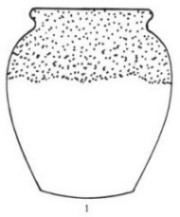
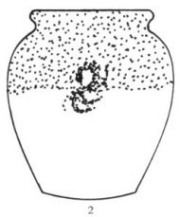
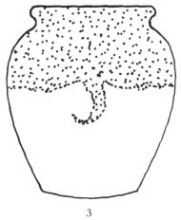
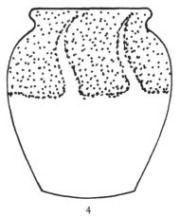
The most common basic decoration and usually found in two colours. The upper colouring, often darker, may include gold aventurine. The change from upper to lower colour varies from a distinct line to a gradual blending.
As style 1, but with the addition of three equally spaced whorls. The whorls, or sworls, often included traces of other colours.
As style 1, but here the upper colour has been pulled down into the lower section. No traces of other colours. Scarce.
As style 1, but here the lower colour has been pulled up into the upper colour, often right to the rim of the piece. There are usually three pulls on a piece, but this style has been found with four or more pulls. Traces of other colours are sometimes added to the pulls. Compare with style10.
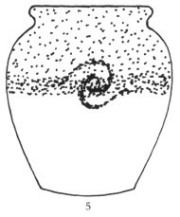
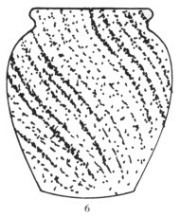
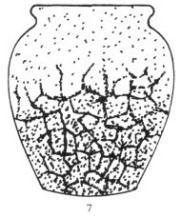
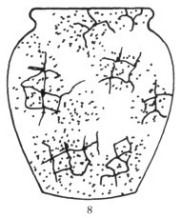
As style 1, but with an added band of a third colour at the junction. All the colours are whorled at three or more points on the circumference.
Several colours have been streaked diagonally down the piece, sometimes stopping about half-way down, but usually continuing almost down to the base. The ground is usually a single colour, most frequently blue.
The lower half has splashes of dark colours, usually three, with a veining of a fourth colour. The veining may be heavy or faint and is usually deep violet in colour, although white veining is known. The upper colour is plain without aventurine. Scarce.
N.B. Veining is quite common in W.M.F. glass.
Like STYLE 7, but here the veining is all over although often very patchy. Brighter colours may be used in splashes. Rare.
‘Paisley Shawl’
‘Cloisonné’
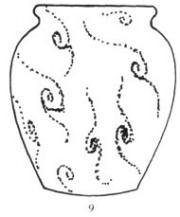
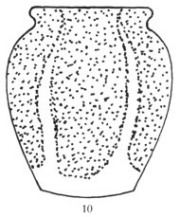
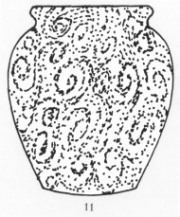
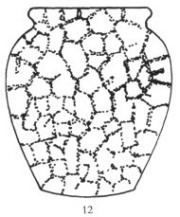
Many variations of this style have been recorded, from large whorls in transparent tinted glass to small tight whorls in almost opaque glass made from either one, two (like style 1) or several colours. Also found in early surface decorated pieces.
Unlike style 4, the upper colouring extends nearly to the base in vases and right under the base in bowls to create a panelled effect. To date, found only in surface decorated pieces giving them the appearance of pottery.
A Monart style named ‘Paisley Shawl’: a surface decoration, opaque green over clear glass with white pieces swirled tightly into the surface. Heavily lustred, the white takes on a deep, silvery grey colour.
2002 - A few other colours amd multi-colours are known. Very rare.
A Monart style named Cloisonné. Usually made from three layers of glass: a solid coloured inner, a clear layer, then a thin outer layer, usually white. The crackled effect on the surface was created by dipping the piece in a bucket of water before blowing to the final size. Extensive use of lustre giving the white a deep, silvery grey colour. Scarce with red or white inner, rare in other inner colours.
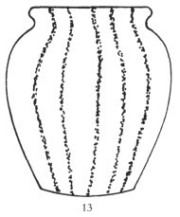
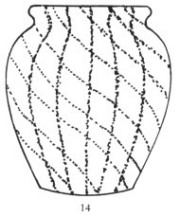
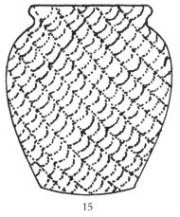
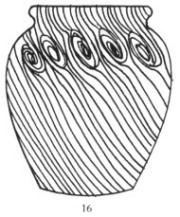
Vertical lines of colouring over clear glass or another colour. On surface decorated pieces the ribbed dip mould used to produce the lines leaves a slight depression. Scarce.
The spiral lines were applied before the vertical lines. As with the previous style, on surface decorated pieces the depressions from the ribbed dip mould are apparent.
Similar to Style 14, but here both sets of lines have been twisted, resulting in a herringbone pattern.
The lines are very close together and whorled near the top of the piece. A very scarce design which was illustrated in the Perthshire Advertiser in 1929.
‘Bubbles’
‘Lava or Pumice’
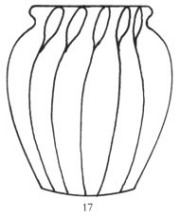
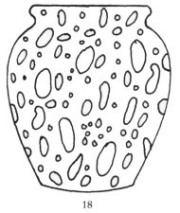
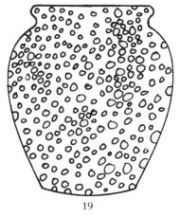
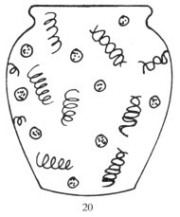
Bubbles at the top of lines are the most common type of bubble decoration. In a variation, small bubbles run up the lines over the colour.
Bubbles ranging in size are spread at random over the piece. They can be up to 50mm (2") across on large pieces. Occasionally, a vague pattern is made with the bubbles. Commonly found in pale blue, but mixed colours are known. Scarce.
A surface decoration covered in minute blisters bubbles, giving the appearance of pumice stone. Usually in one solid colour over a clear or off-white inner. All the known examples are made in dark colours. Very rare.
In Monart a surface decoration made with either millefiori or filigree canes, or a mixture of both. Extremely rare.
One Vasart example with filigree canes is known, but this is cased over with clear glass. One Strathearn example has also been found.